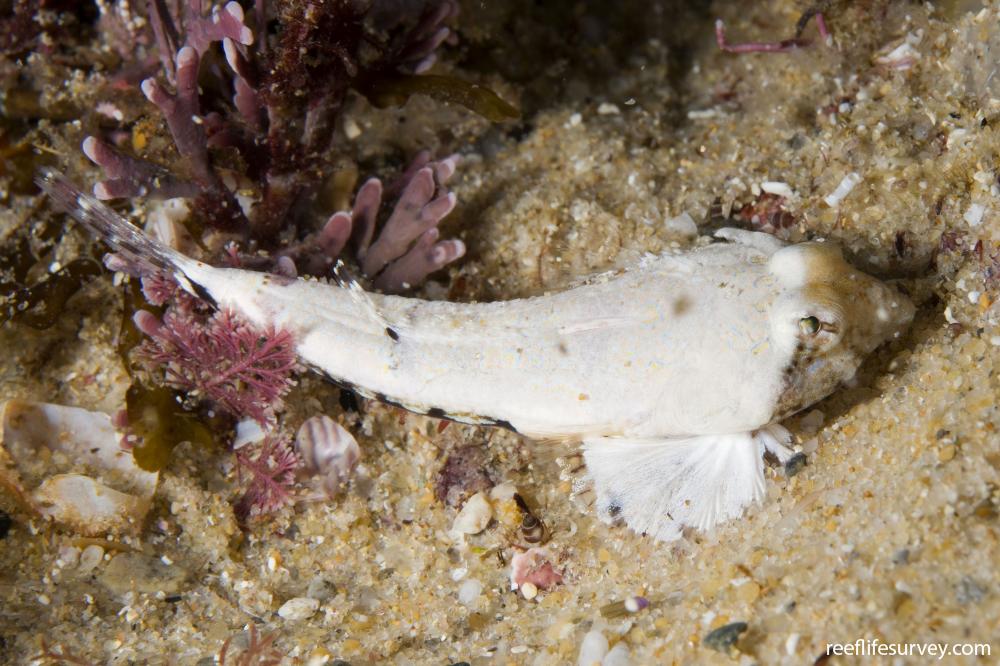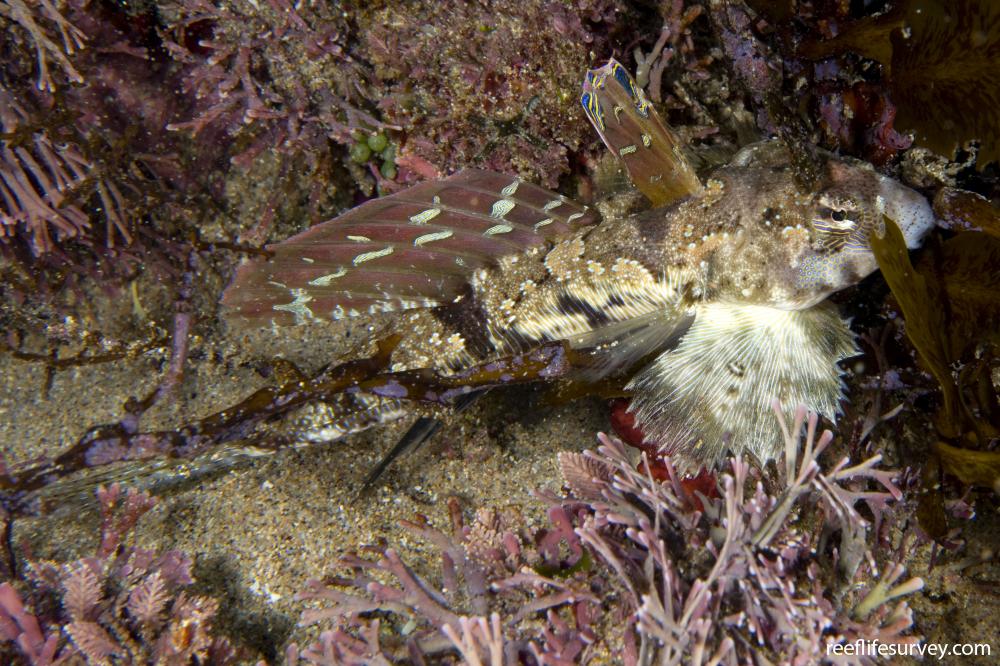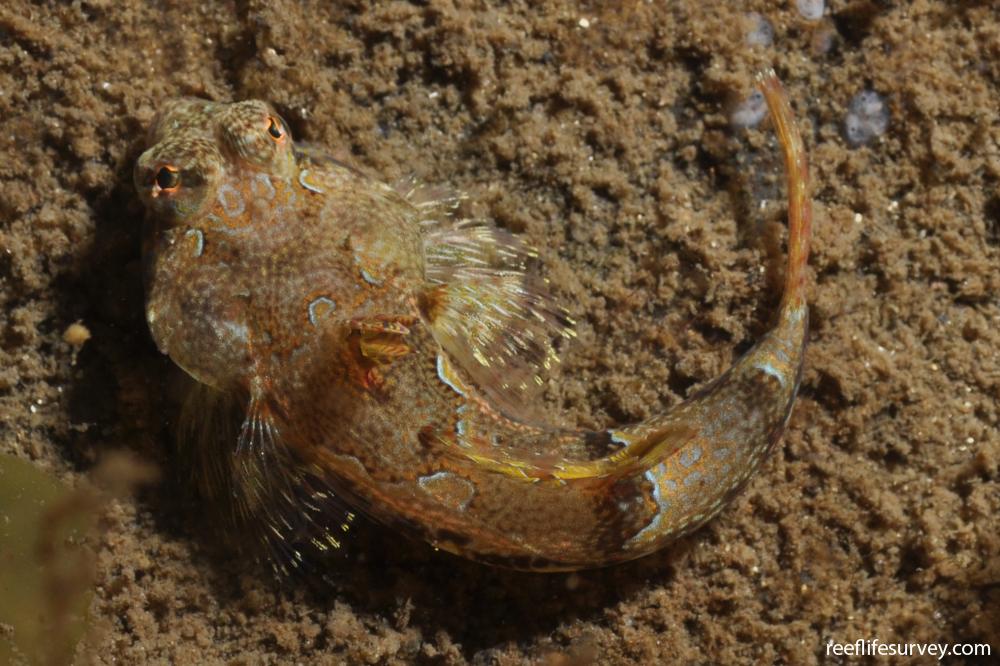Eocallionymus papilio
Painted stinkfishDistribution
Temperate Australasia
Description
Cream blotches with fine blue margins on the back, and streaks down the side of the body. The species is small and inconspicuous, usually remaining immobile on the seabed unless disturbed. It occurs moderately commonly, most often on broken bottom close to the edge of reefs. The form found in estuaries, which may perhaps prove to be a different species, is larger and more elongate than animals seen on the open coast.
Information
Max Size: 10 cm
Sea Temperature Range: 11.5-24.6°C
Depth: 1-50 m
Habitat Generalization Index: 1.76
Also referred to as the SGI (Species Generalisation Index), this describes the habitat niche breadth of the species. Species with values less than 15 are found in a relatively narrow range of reef habitat types (specialists), while those over 25 may be found on most hard substrates within their range (generalists). Learn more here.
Conservation and Rarity
IUCN Status: Not Evaluated
Occurrence: Frequent (11.8% of sites)
Occurrence describes how often the species is found on surveys within its distribution. It is calculated as the % of reef sites surveyed by RLS divers across all the ecoregions in which the species has been observed
Abundance: Few (2 per transect)
Abundance is calculated as the average number of individuals recorded per RLS transect, where present.

















